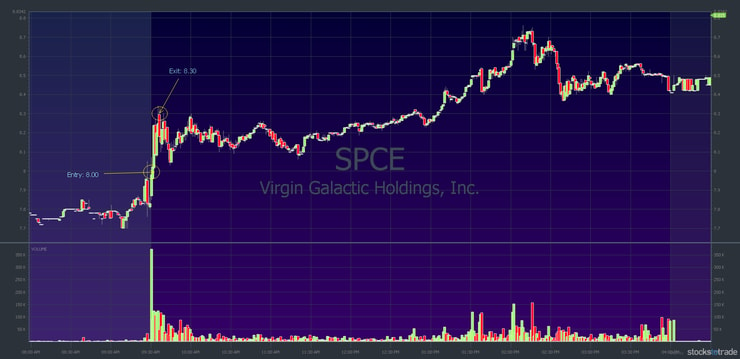I’m so grateful for my life. I get to teach others how to create freedom. And I get to meet some of the most amazing people.
But it’s truly an honor to help change lives by giving back. It’s an honor to support important causes through Karmagawa. And last week we did three events focusing on three different issues.
Table of Contents
Goin’ Back to Miami
As I mentioned in the last edition of the update, I was back in Miami for Mat Abad’s charity auction at the Art Basel Miami Beach event. Mat raised roughly $30K for charity, which will pretty much all go to help build schools.
I like the idea of leaving things a little better than I found them. So while in Miami with a bunch of Karmagawa people, we did another beach cleanup.
Another — Bigger — Miami Beach Cleanup

This time we had close to 60 people participate in the cleanup. That’s pretty inspiring. And we picked up nearly 60 pounds of trash in less than an hour. That’s pretty crazy.

As you know from the Save the Reef documentary, our oceans and marine life are at risk. Trash from beaches is only a small part of the bigger picture, but we’re trying to do everything we can. So we organize these beach cleanups whenever possible.
(Please watch the Save the Reef film if you haven’t already. You’ll discover one simple step you can do when you visit the beach to ensure you’re not part of the problem. To keep up to date, subscribe while you’re there.)

Announcing Our Next Documentary for Earth Day 2020
We’re working on a new documentary for Earth Day next year — this one will be all about plastics. Millions of tons of plastic end up in the oceans every year. And studies show plastic is found in more than 100 aquatic species, many of which we eat.
Even if you don’t live near the coast, plastic from your area can end up in the ocean. So organize a local cleanup. Do it.
Karmagawa Supports Boys & Girls Clubs of Miami
This year we all dressed up in Santa hats. We donated more money, of course. I think we’re right around $50K of donations in the past three years.

There are a lot of kids who, frankly, don’t have a lot of stability in their lives. Some don’t have positive role models in their families. The Boys & Girls Clubs provide stability and positive after-school services. They help with homework and organize sports programs. They work to keep children occupied with healthy, safe, and productive activities.

Mat and I believe education is important because it had such a big impact on both our lives. So we’re happy to support the Boys & Girls Clubs of Miami with gifts as well as donating money.
Penny Stock Trading Lesson: Take Profits Along the Way
It seems obvious, right? You’re in this to make money. So taking profits along the way makes sense. I can’t tell you how many times I see in the chat rooms “I should have taken profits when it was up … but I got greedy.” Stop it! Take profits. Grow your account.
New to penny stocks? Get the basics from my FREE penny stock guide.
We’re not seeing that many multi-week or multi-month runners right now. So you just gotta try to be safe. Try to take profits a little quicker.
Check it out…
On most trades, I go for 10%–20% gains. And sometimes I get it. But if you look at my last nine trades only one is that big: PRFC on December 6. Instead, I’ve been taking profits when they come and NOT being greedy.
Here are my nine trades from December 3 to December 12 and the percentage won or lost:
- Texas Mineral Resources Corp (OTCQB: TMRC) 5.3%
- Diffusion Pharmaceuticals Inc. (NASDAQ: DFFN) 4.31%
- LMP Automotive Holdings, Inc (NASDAQ: LMPX) 4.2%
- Technical Communications Corporation (NASDAQ: TCCO) -2.78%
- Virgin Galactic Holdings, Inc (NYSE: SPCE) 3.75%
- QuantGate Systems Inc., formerly Epcylon Technologies, Inc (OTCPK: PRFC) 23.78%
- Duluth Holdings Inc. (NASDAQ: DLTH) 1.33%
- Duluth Holdings Inc. (NASDAQ: DLTH) 8.37%
- Proteostasis Therapeutics, Inc. (NASDAQ: PTI) 8.78%
The average gain is only 6.34%…
Study that. Take it in. The single loss was less than 3%. My biggest win was roughly 24%. Two wins were almost 9% … but didn’t quite make it. What was the profit on those nine trades? $4,400. Small wins add up.
[My results are not typical. I have exceptional skills and knowledge developed over time. Roughly 90% of traders lose money. Do your due diligence and never risk more than you can afford.]
👉🏼 SUBSCRIBE to my FREE weekly stock watchlist.
Do the Math: Taking Profits (Even Smaller Profits) Adds Up
With some of these trades, I only make a few hundred bucks. Sometimes I sell halfway before it gets to my goal. Many times I’m on the right track, but I don’t want to hold a stock all day.
For me, that’s kinda crazy. So I just accept it. And you have to accept it, too.
There were SO many big spikers last week. But you gotta be choosy. You don’t have to be in them all. (Nor should you — you’ll just overwhelm yourself.)
The good news with so many plays is that you have choices. Focus on plays that offer solid risk/reward setups. (If you don’t know what those plays look like, read “The Complete Penny Stock Course.”)
Let’s get on with some…
Trading Questions From Students
“If a sector is hot, does it change how you calculate risk on stocks in the sector?”
Yes. 100%. One of the indicators is … how hot is the pattern? Pattern and price together make up the first indicator on my sliding scale. And when a sector is hot you see similar patterns and price action with related stocks. You see more sympathy plays. And that changes how you calculate risk.
Market environment is another indicator that takes sector momentum into consideration. I use all seven indicators from my Trader Checklist guide. (For more on how to use the sliding scale, see Trader Checklist and Trader Checklist Part Deux.)
So it’s not just “Is this an earnings winner?” Or “Is this a dip buy?” You also have to take into account … “What’s the sector? What’s the market environment? What patterns are working now?”
Take the recent biotech sector spikers…
Sector Comparison: Biotechs vs. Tech
Dip-buys on biotech earnings winners aren’t usually as good as with new technology earnings winners. With biotech, it doesn’t really matter what they’re earning right now. They’re usually priced based on the valuation of their future drugs.
That versus a company with new tech that’s booming … it doesn’t matter what happens 10 or 20 years from now. Will their current tech be a moneymaker?
So … different industries have different time periods. You have to base results on the industry time frame … you have to think about that.
Final question for this edition…
“You’ve talked about holiday trading recently. I’ve heard of end-of-year tax-loss selling. What is it? And is there an obvious way to recognize it?”
So, yeah, I wrote about holiday trading in this post on December 12: What Is Holiday Trading for Penny Stocks? And I’m writing a post about tax-loss selling and the January effect. I’ll be posting that in a few days. I’ll go into more detail in that post.
To answer the question about obvious ways to recognize it…
No, it’s just seeing a stock beaten down — maybe too much — near the end of the year.
It’s kinda like short-selling. There’s no accurate data. Anybody who claims that there’s specific data or says…
“This selling was tax-loss selling” or “this is what shorts are doing” doesn’t really know.
Short Selling and Tax-Loss Selling: How Can You Tell?
Short-selling data is a month old. And even then it’s debatable whether it’s accurate. So if a stock has been spiking for four days, the month-old short data is totally irrelevant. And tax-loss selling … you don’t really know.
Trade Analysis: Was Virgin Galactic (NYSE: SPCE) Tax-Loss Selling?
Part of the reason I bought Virgin Galactic on December 9 was because it was beaten down the last couple of weeks. (In my upcoming post about tax-loss selling I’ll show more charts from companies with year-end sell-offs.)
You can see by the chart below — the stock was hanging in the $10s and $12s … and then got demolished into the $7s.

When I bought, it was spiking on big volume after positive analyst news. It’s not the most volatile stock — which is why I sold it too soon. It hit my goals in the high $8s so there was a nice 10% potential upside. I took a little less than half of that.
Here’s the SPCE intraday chart from December 9 along with my entry and exit points…

It was a speculative trade for me … but it worked. And some students did even better, so that’s a good thing. (See students’ trade comments at the end of this blog post.)
Was it beaten down because of tax-loss selling? Here’s how I look at it…
How a Holiday Trading Pattern Becomes a Self-Fulfilling Prophecy
If it looks obvious, it kinda becomes a self-fulfilling prophecy. Whether it is a tax-loss selling/January effect kind of play to start…
… when people say, “Hey, it’s spiking more and more…”
… then it becomes that kind of play whether it started that way or not.
But that’s why I like self-fulfilling prophecies. If it fits the perfect pattern, you can say, “Look, it’s the perfect pattern.”
Here’s an example: if a stock is breaking out a little bit, other people will start mentioning it. And when enough people mention it — and buy it — the breakout is more than just a little bit. It’s a lot.
So … be aware of self-fulfilling prophecies and learn to take advantage of them.
What Students Are Saying
Here are a few of the comments from students who also watched and traded SPCE on December 9 and 10:
From the Trading Challenge Chat Room
Before you read the chat comments…
People ask me all the time where I find stocks. And I always tell them to use StocksToTrade because it has so many built-in scans. Guess who suggested the scans? Those are my scans. So it drives me crazy when people ask the same thing over and over but don’t take my advice.
As you can see, StocksToTrade picked up SPCE with plenty of time to do research before the market opened…
December 9
08:10 AM Kauai2020: SPCE on STT the oracle screener.
09:37 AM usmarine2daytrader: Bought SPCE at 7.75 Pre-market out at $8.14.
09:49 AM olli400: Bought 120 SPCE $8.15 for a day hold risking 8.
December 10
10:06 AM usmarine2daytrader: I rebought SPCE yesterday for $8.15 out this morning at $9.00.
09:21 AM olli400: Sold my 120 SPCE $8.90.
Millionaire Mentor Market Wrap
That’s another update in the books.
Check the blog every day this week for more on tax-loss selling and the January effect. The more you learn about holiday trading, the better prepared you’ll be. PLUS … I’ll drop a post about my biggest loss of 2019.
Remember, the stock market is a battlefield. The better prepared you are, the better your chance of success. So spend every spare minute studying. That’s what all my top students did — and many still do.
If you’re ready to go all in — full trading education immersion — then apply for the Trading Challenge today.
[Note that these results aren’t typical. These students put in the time and dedication and have exceptional skills and knowledge. Most traders lose money. Always do your due diligence and remember trading is risky … never risk more than you can afford.]
What do you think of this post? Comment below, I love to hear from all my readers!






Leave a reply